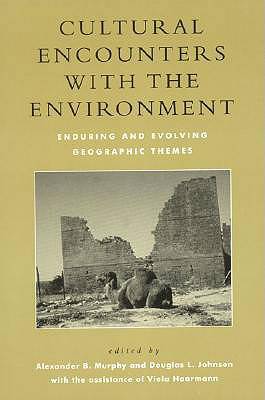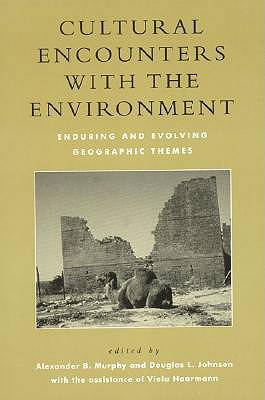
Door een staking bij bpost kan je online bestelling op dit moment iets langer onderweg zijn dan voorzien. Dringend iets nodig? Onze winkels ontvangen jou met open armen!
- Afhalen na 1 uur in een winkel met voorraad
- Gratis thuislevering in België vanaf € 30
- Ruim aanbod met 7 miljoen producten
Door een staking bij bpost kan je online bestelling op dit moment iets langer onderweg zijn dan voorzien. Dringend iets nodig? Onze winkels ontvangen jou met open armen!
- Afhalen na 1 uur in een winkel met voorraad
- Gratis thuislevering in België vanaf € 30
- Ruim aanbod met 7 miljoen producten
Zoeken
Cultural Encounters with the Environment
Enduring and Evolving Geographic Themes
Alexander B Murphy, Douglas L Johnson, Viola Haarmann
Hardcover | Engels
€ 159,45
+ 318 punten
Uitvoering
Omschrijving
In Cultural Encounters with the Environment, a distinguished group of contributors offers a fresh and original view of contemporary geography. The authors explore the role of four traditional themes in the "new cultural geography" the interplay between the evolution of particular biophysical niches and the activities of the culture groups that inhabit them; the diffusion of cultural traits; the establishment and definition of culture areas; and the distinctive mix of geographical characteristics that gives places their special character in relation to one another. By examining how cultural space is constructed; how environment is remade, understood, and imaged as a consequence; and how people lay claim to place, this volume establishes a compelling case for the importance of these enduring concepts to present and future trajectories in cultural geography.
Specificaties
Betrokkenen
- Auteur(s):
- Uitgeverij:
Inhoud
- Aantal bladzijden:
- 352
- Taal:
- Engels
Eigenschappen
- Productcode (EAN):
- 9780742501058
- Verschijningsdatum:
- 12/04/2000
- Uitvoering:
- Hardcover
- Formaat:
- Genaaid
- Afmetingen:
- 157 mm x 229 mm
- Gewicht:
- 580 g

Alleen bij Standaard Boekhandel
+ 318 punten op je klantenkaart van Standaard Boekhandel
Beoordelingen
We publiceren alleen reviews die voldoen aan de voorwaarden voor reviews. Bekijk onze voorwaarden voor reviews.











